- FR
- GB
The Post-war reconstruction period in Reims was the opportunity provided to the Foyer Remois to erect the Chemin Vert garden city. This construction company was established in 1912.
Behind the project, Georges CHARBONNEAUX, the son and the brother of glassworks owners, himself a distiller, was intent on supplying decent and low rent housing to large families. He found his model in Bournville (England).
As early as 1918, the Chemin Vert garden city became a great reconstruction project, part of George FORD’s master plan. By regaining payments of war damages granted to owners of destroyed homes, the project, conceived before 1914, took an unexpected scale. More than 600 houses were consequently built. The garden city was based on single family houses with a garden and included community services: an administrative and cultural centre, a House of Childhood, whose purpose was the prevention of childhood illnesses and the promotion of births, a nursery with infant health care, a kindergarten, a school, youth clubs and a church.
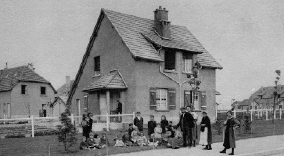
Jean-Marcel AUBURTIN, the architect in charge, drew inspiration from the architecture found in Alsace with hipped roofs for the houses. He organised them in terraces of six, eight or ten dwellings, ranging from 390 to 700 square feet. His ethos derived from hygienist considerations: air, light and sun in a rewarding environment for the houses and community buildings alike, with a particular reference to the church building.


Georges CHARBONNEAUX
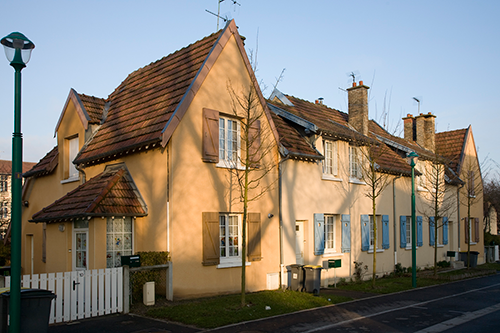
Garden city homes
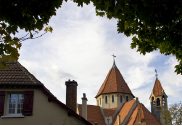
Saint-Nicaise at the heart of the estate
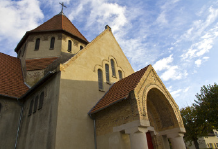
Saint-Nicaise today
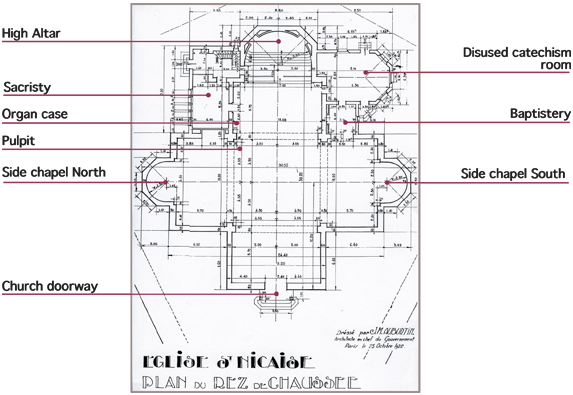
The ultimate in the garden city, the church was built between February 1923 and June 1924, thanks to 250 generous donators who responded to a subscription open to Reims’ dignitaries. Artists also financially supported this philanthropic enterprise. But Georges CHARBONNEAUX donated the largest part out of his own pocket.
Located in the garden city’s entrance centre-line, the church seems to be spiritually linked to Notre-Dame Cathedral, seen at a distance in a direct perspective. The building embodied the founder’s social catholic values.
Georges CHARBONNEAUX took advantage from the fact that the 1905 law separating the Churches and State fostered the construction of new churches. Hence, he had a free hand in creating an architecture and decoration matching his own conceptions.
His individual tastes in Fine Arts, his involvement in the cultural life of the city, his close relations with Paul JAMOT extended to his companionship with Parisians. Established in 1909, a community gathered graduates from the National School of Fine Arts around Catholic values. This enabled Georges CHARBONNEAUX to find answers to his creative desires in a period when new ideas were flourishing.
These Parisian Catholic artists of the Saint John Community lived according to the spirit of medieval art workshops made up of different guilds (painters, sculptors, stained glass makers, decorative artists).
The church fancied by George CHARBONNEAUX displayed a simple architectural exterior. Built in reinforced concrete, covered with a cement coating, its Greek cross plan gave it a stocky and sturdy look. One is reminded of Romanesque-Byzantine churches, derived from the OTTMARSHEIM church in Alsace. An octagon lantern caps the crossing of the transept. A weathervane in the shape of a cock perches upon the bell tower. The ground plan consists of two side-chapels with a central apse, a baptistery, a richly decorated interior, enhanced by the symbolist style and decorative arts. This setting is a unique creation in its uniformity, which marked twentieth century religious history in France.
Saint Nicaise church was inaugurated by Archbishop LUCON, June 8, 1924 and consecrated by Archbishop SUHARD in 1934, both at the head of the Diocese of Reims.
This church building was designated a historical monument on February 12, 2002 and it belongs to the FOYER REMOIS.
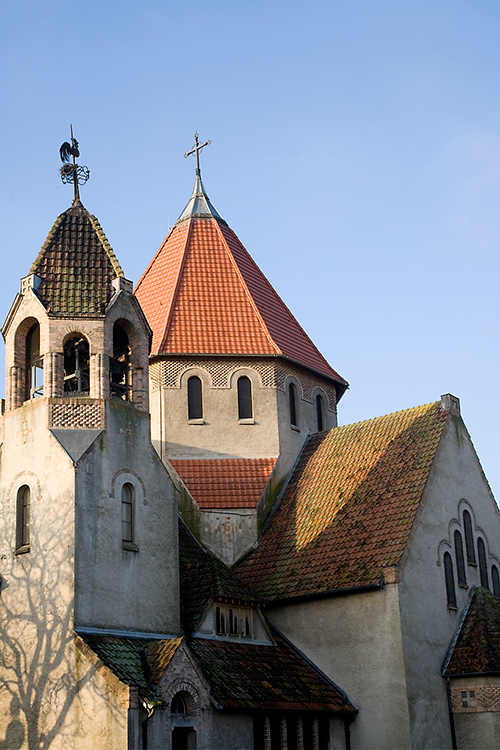
The bell tower

The church doorway
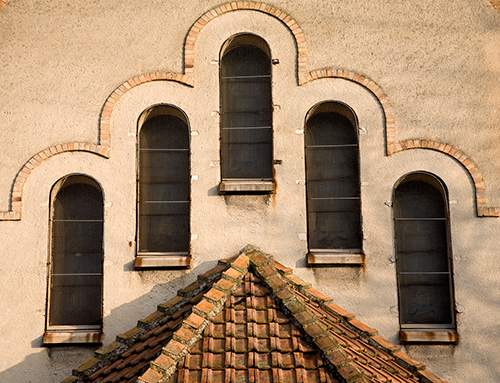
The windows